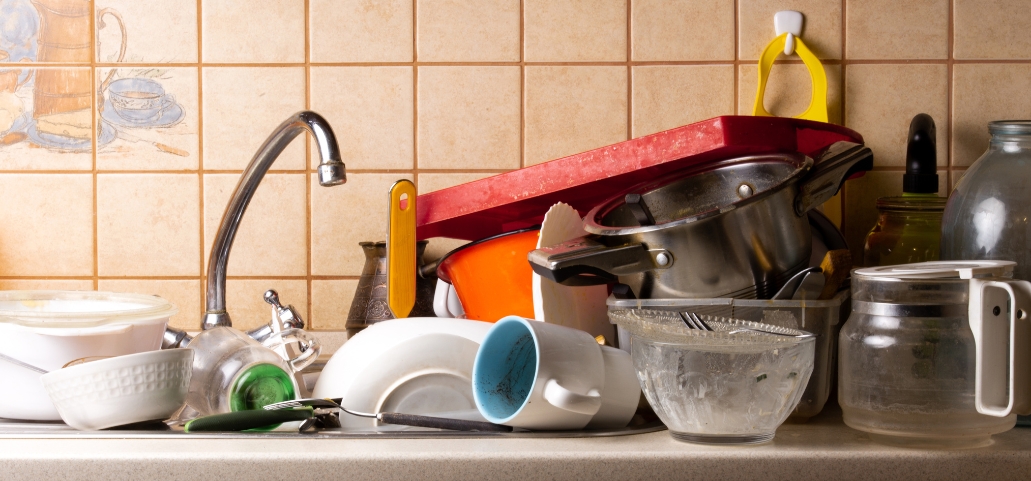Your kitchen is likely filled with small appliances that eventually need to be retired then must know how to dispose of small kitchen appliances. From toasters and coffee makers to blenders, these trusty workhorses often don’t get the farewell they deserve. Properly disposing of them not only clears space but also promotes environmental sustainability and personal safety. In this guide, we will walk you through eco-friendly ways to bid adieu to your appliances, including recycling options and charitable outlets. Together, let’s make every unplugged cord for how to dispose of small kitchen appliances!
Importance of Proper Disposal
Knowing why appropriate disposal is important when it comes to tiny kitchen gadgets is essential. While these appliances often consist of materials like plastic, glass, and steel, it’s important to note that many also contain hazardous components such as lead, mercury, and refrigerants. Without proper disposal, these substances have the potential to end up in landfills, posing a threat to our environment and water sources. Moreover, the issue of electronic waste further exacerbates the concern. E-waste is becoming a significant problem worldwide because of the ongoing advancements in technology . By taking action and responsibly how to dispose of small kitchen appliances, we can contribute to a cleaner and safer world for future generations.
Disposal Methods for How to Dispose of Small Kitchen Appliances

When it’s time to bid farewell to your trusted kitchen appliances, it’s important to handle their how to dispose of small kitchen appliances with care. Each appliance has its own intricacies, and finding the right way to say goodbye can make a big difference for the environment.
- Blender: Before disposing of your blender, consider disassembling it to separate the different components. This will make recycling easier. Find out if the recycling center in your area accepts plastic or glass blender parts. If not, you can also see if your community offers any programs for recycling appliances.
- Toaster: To dispose of a toaster, start by unplugging it and removing any crumbs or debris. Find out if the recycling center where you live accepts metal and plastic toasters. If recycling isn’t a possibility, think about giving it to a thrift shop or local charity if the toaster is still functional.
- Coffee Maker: Coffee makers can be made of a variety of equipment, such as metal, glass, and plastics. Some components, like the glass carafe, can often be recycled separately. Find out if your neighborhood recycling center takes coffee machines or just particular parts by calling them. If not, consider donating the coffee maker if it is still functional or exploring appliance recycling programs.
- Microwave: Disposing of a microwave requires proper handling due to its electronic components. Seek out local initiatives for recycling electronics, including microwaves. These programs can ensure that the hazardous materials in the microwave are disposed of safely. Consider giving the microwave to a nearby charity or a person in need if it is still functional.
- Food Processor: Before disposing of a food processor, make sure to remove all food residues and detachable parts. Find out whether food processors made of plastic and metal are accepted at your neighborhood recycling center. If recycling is not an option, consider donating it to a community kitchen or a culinary school that might find it useful.
Remember, how to dispose of small kitchen appliances not only helps protect the environment but also gives them a chance at a second life. We can help create a more sustainable future by making thoughtful decisions and looking into recycling and donating opportunities.
Recycling: An Eco-Friendly Practice That Makes a Big Difference
Recycling has become a vital habit for sustainable living in the modern world, when environmental issues are of utmost importance. Not only does recycling help preserve our planet’s resources, but it also offers a range of benefits that go beyond waste reduction.
Benefits of Recycling:
- Conservation of Resources: Recycling plays a crucial role in conserving valuable resources, including water, energy, and raw materials. By adopting a sustainable approach of reusing materials instead of extracting new ones, we can significantly alleviate the strain on our planet’s limited resources. This practice not only mitigates the depletion of natural reserves but also helps to reduce pollution and minimize waste generation. By actively taking part in recycling initiatives, we improve the environment over the long run and set the stage for a more sustainable future.
- Waste Reduction: Recycling is a vital component in cutting down on the quantity of waste that is dumped in landfills. By actively diverting waste from landfills, we can effectively mitigate the significant environmental harm caused by waste decomposition and the release of harmful greenhouse gasses into the atmosphere. This method helps to preserve natural resources while reducing pollution and using less energy. By embracing recycling as a sustainable solution, we can make a positive impact on the health of our planet and future generations.
- Energy Savings: The recycling process offers numerous benefits, one of which is the significant energy savings compared to producing goods from raw materials. When we recycle materials like paper, plastic, and metal, we not only conserve energy but also contribute to reducing our carbon footprint, thereby promoting a more sustainable future. Recycling and removing waste from landfills are two ways we may help protect the environment for coming generations, minimize pollution, and preserve natural resources.
- Pollution Prevention: Recycling is essential for cutting down on pollution from the extraction, processing, and production of new materials. We can successfully reduce air and water pollution, energy consumption, and the use of natural resources by actively participating in recycling initiatives. This, in turn, contributes to creating cleaner and healthier surroundings for both present and future generations. Recycling may be seen as a sustainable habit that not only helps the environment but also cultivates a sense of stewardship and accountability for our planet.
Steps to Recycle For How to Dispose of Small Kitchen Appliances:
- Research Local Recycling Options: Start by researching recycling facilities or programs in your local area that accept small kitchen appliances. Check with local recycling centers, electronic waste collection events, or consult your municipality’s recycling guidelines.
- Prepare Appliances for Recycling: Before recycling, it’s essential to prepare your small kitchen appliances. Remove any food residue, detachable parts, and accessories. Clean the appliances thoroughly, ensuring they are free from dirt or grease.
- Check for Reusable Parts: Some small kitchen appliances may have reusable parts or components. Consider donating these functional parts to local repair shops, appliance refurbishment programs, or online platforms that specialize in reusing spare parts.
- Recycle According to Guidelines: Follow the recycling guidelines provided by your local recycling facility or program. It can be necessary to disassemble some appliances in order to properly recycle the various materials. To optimize the recycling potential, make sure you closely adhere to the guidelines.
- Dispose of Non-Recyclable Components Properly: Some parts of small kitchen appliances may not be recyclable. Follow your local waste disposal requirements before disposing of these non-recyclable components. For advice on appropriate disposal techniques, get in touch with your neighborhood waste management agency or municipality.
By incorporating recycling into our daily lives, we may contribute to the creation of a more sustainable and eco-friendly future. Never forget that every little effort matters, and when we all work together, we can meaningfully improve the state of our planet. Be a part of the solution by being involved in the recycling movement today! Making a Charitable Donation.
Donating to Charity
For items that still have some juice left in them and are in good condition, donating can be an excellent way to contribute to those in need. By donating your gently used kitchen necessities, you not only lessen waste but also give others the chance to make use of these things. Discover how to locate and engage with reputable charitable organizations that will happily accept your donations and ensure they reach those who truly need them. When we work together, we can change the world for the better and build a more compassionate and sustainable society. Online Sales
Selling Online
If you’re looking to recoup some costs or invest in an appliance upgrade, online platforms can be your best friend. They provide a convenient and efficient way to buy and sell, ensuring you get the most out of your transactions. From setting the right price based on market trends to understanding shipping logistics and handling payments securely, we’ll guide you through the entire process with ease. You can comfortably navigate the online marketplace and make wise purchases thanks to our experience and user-friendly interface. Start maximizing your savings and exploring new possibilities today!
Manufacturer Take-Back Programs

Not many people are aware of this, but it’s worth noting that some manufacturers go the extra mile by offering take-back programs as part of their unwavering commitment to environmental stewardship. These programs provide individuals with an opportunity to actively participate in responsible appliance disposal, contributing to a greener and more sustainable future. Returned appliances to manufacturers allow for appropriate recycling or environmentally acceptable disposal, lessening their detrimental effects on the environment and the planet. Joining these programs not only allows us to make a positive difference but also promotes a collective effort towards a cleaner and healthier world for generations to come.
Conclusion
In conclusion You’ll have the information and self-assurance to how to dispose of small kitchen appliances in an appropriate and responsible manner by the time you finish reading this article. Follow our tips and you’ll be well on your way to a kitchen that’s not only sleek and efficient but also sustainable as can be.
Frequently Asked Questions
Q1. How to Properly Dispose of Small Kitchen Appliances?
Answer: To dispose of electronic waste properly, research local regulations and guidelines. Find recycling centers or designated drop-off locations nearby. Check for manufacturer recycling programs. Consider donating or selling usable appliances. Remove batteries separately. Attend e-waste collection events for appropriate disposal.
Q2. What are the eco-friendly methods for disposing of small kitchen appliances?
Answer: Explore environmentally conscious options for getting rid of your small kitchen appliances, including recycling centers, manufacturer take-back programs, and electronic waste events.
Q3. Can I donate my old kitchen appliances, and where can I do that?
Answer: Learn about donating small kitchen appliances to charities or selling them to extend their lifespan. Find local organizations or online platforms where you can contribute or sell your gently used items.
Q4. Are there any regulations I need to follow when disposing of electronic kitchen devices?
Answer: Stay informed about local waste disposal regulations governing electronic waste. Recognize the local regulations to make sure that disposing of your small kitchen equipment properly and legally.
Q5. How can I recycle small kitchen appliances, and what materials are recyclable?
Answer: Discover the recycling process for small kitchen appliances and identify recyclable materials. Find recycling centers that accept electronic waste and understand the steps to responsibly recycle various components.
Q6. What should I do with the batteries in my kitchen appliances before disposal?
Answer: Learn the importance of removing batteries from small kitchen appliances before disposal and find proper methods for battery disposal. Ensure you handle batteries separately to adhere to safety and environmental guidelines.
Disclaimer: This page contains information that is solely intended for educational and informative reasons. To make sure that the applicable disposal rules are being followed, always check with your local waste management facilities and regulations.
Trust Us: Our writing and editing staff thoroughly investigates every subject to deliver the most accurate, current, and trustworthy information available.
Personal Experience: I once faced the daunting task of disposing of my trusty old blender, which had served me smoothies for years. Through the process, I learned about the various ways one could handle such a situation, including local recycling centers and even repurposing the motor for a DIY project. This encounter strengthens my resolve to provide you with truthful and insightful information.

